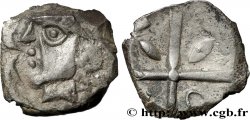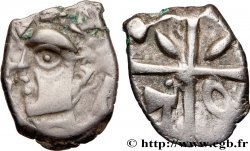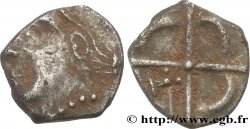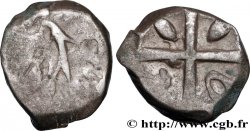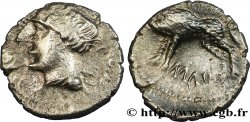Live auction - bga_335562 - GALLIA - SOUTH WESTERN GAUL - VOLCÆ TECTOSAGES (Area of Toulouse) Drachme de style hybride entre “cubiste et romanisé”, S. 69 - du trésor de Moussan
You must signin and be an approved bidder to bid, LOGIN TO BID. Accounts are subject to approval and the approval process takes place within 48 hours. Do not wait until the day a sale closes to register. Clicking on "BID" constitutes acceptance of the terms of use of cgb.fr private live auctions.
Bids must be placed in whole Euro amounts only. The sale will start closing at the time stated on the item description; any bids received at the site after the closing time will not be executed. Transmission times may vary and bids could be rejected if you wait until the last second. For further information check the Live auction FAQ
All winning bids are subject to a 18% buyer’s fee.
All winning bids are subject to a 18% buyer’s fee.
| Estimate : | 1 200 € |
| Price : | no bid |
| Maximum bid : | no bid |
| End of the sale : | 01 March 2016 15:22:17 |
Type : Drachme de style hybride entre “cubiste et romanisé”, S. 69 - du trésor de Moussan
Date: IIe siècle av. J.-C
Metal : silver
Diameter : 15,5 mm
Orientation dies : 12 h.
Weight : 3,57 g.
Rarity : R2
Coments on the condition:
Monnaie de qualité, bien frappée et centrée. Patine sombre, avec une légère concrétion derrière la tête au droit. Revers complet mais avec une patine un peu hétérogène
Catalogue references :
Predigree :
Cette monnaie provient de la collection de G. Savès. Exemplaire n° 26 (pl. I) du Trésor de MOUSSAN (1967)
Obverse
Obverse legend : ANÉPIGRAPHE.
Obverse description : Tête à gauche ; le menton en galoche, le nez fort ; chevelure retombant sur l'oreille avec des mèches qui se rejoignent en chignon derrière la nuque ; un collier de perles à la base du cou ; deux dauphins stylisés devant la bouche.
Reverse
Reverse legend : ANÉPIGRAPHE.
Reverse description : Croix formée de quatre cantons ornés chacun d'une lunule : balle de fronde aux 1er et 2e cantons, une hache au 3e et un pendant en ellipse au 4e canton.
Commentary
Pour le S. 69 qui correspond à notre monnaie, G. Savès décrit une "tête à gauche, au dessin maladroit". Il semble que cette appréciation soit le fait d'un exemplaire de piètre qualité. La drachme S. 69 est effectivement usée et mal frappée alors que celle proposé ici est particulièrement nette et bien frappée. La gravure est d'un bon style, même si la tête est moins allongée que sur les autres monnaies (cf. par exemple S. 55 et 57).
For the S. 69 which corresponds to our coin, G. Savès describes a \\\"head to the left, with a clumsy design\\\". It seems that this assessment is due to a poor quality example. The S. 69 drachma is indeed worn and poorly struck whereas the one offered here is particularly clean and well struck. The engraving is in a good style, even if the head is less elongated than on the other coins (see for example S. 55 and 57)
For the S. 69 which corresponds to our coin, G. Savès describes a \\\"head to the left, with a clumsy design\\\". It seems that this assessment is due to a poor quality example. The S. 69 drachma is indeed worn and poorly struck whereas the one offered here is particularly clean and well struck. The engraving is in a good style, even if the head is less elongated than on the other coins (see for example S. 55 and 57)








 Report a mistake
Report a mistake Print the page
Print the page Share my selection
Share my selection Ask a question
Ask a question Consign / sell
Consign / sell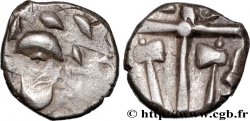
 Full data
Full data